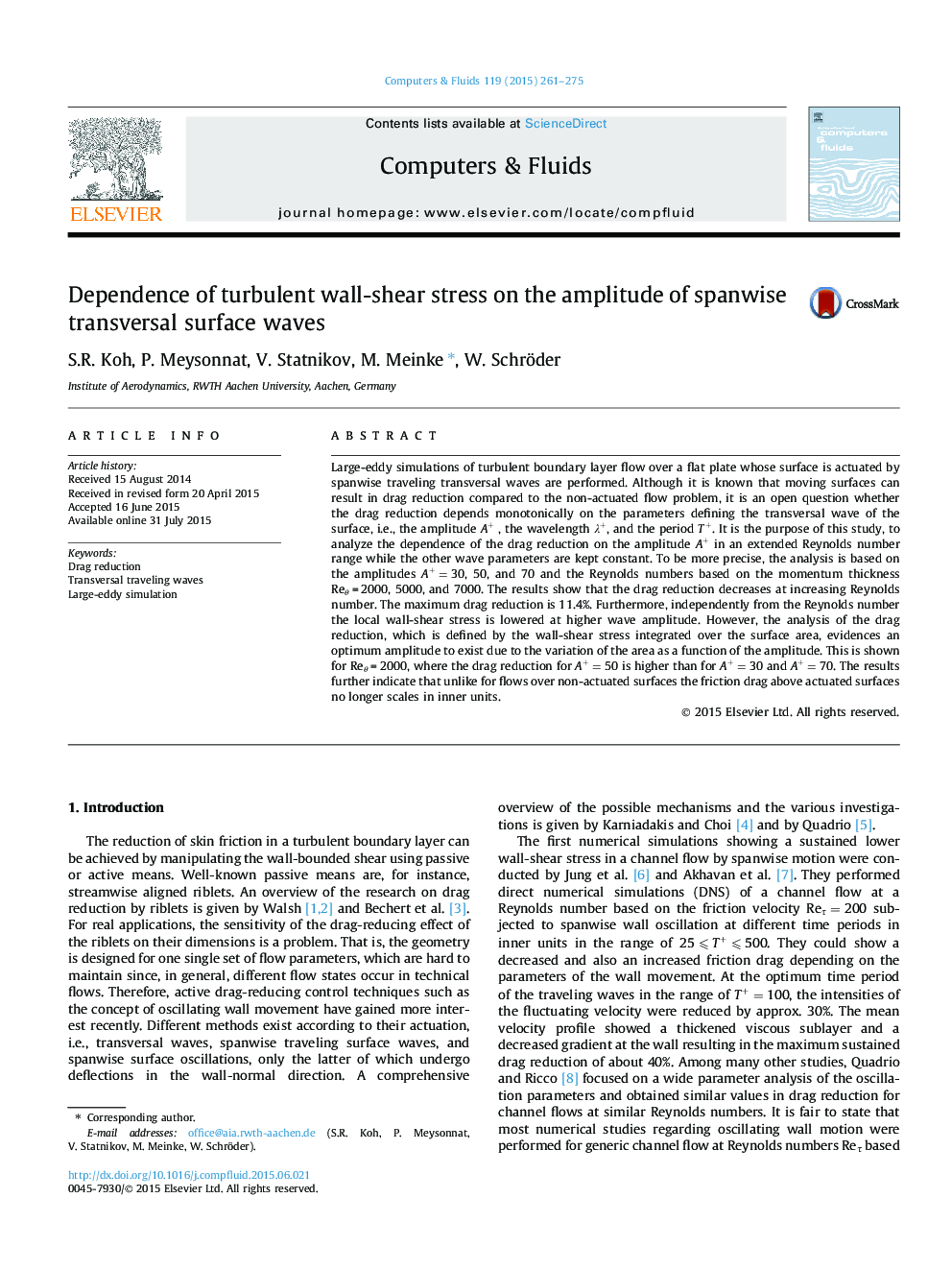| Article ID | Journal | Published Year | Pages | File Type |
|---|---|---|---|---|
| 761564 | Computers & Fluids | 2015 | 15 Pages |
•Large-eddy simulations of turbulent boundary layer ow over spanwise traveling transversal waves are performed.•Reynolds numbers based on the momentum thickness are Reθ = 2000, 5000, and 7000.•The amplitudes of the waves are A+ = 30, 50, and 70.•The maximum observed drag reduction is 11.4%.•The results indicate that the friction drag above actuated surfaces does not scale in inner units.
Large-eddy simulations of turbulent boundary layer flow over a flat plate whose surface is actuated by spanwise traveling transversal waves are performed. Although it is known that moving surfaces can result in drag reduction compared to the non-actuated flow problem, it is an open question whether the drag reduction depends monotonically on the parameters defining the transversal wave of the surface, i.e., the amplitude A+A+ , the wavelength λ+λ+, and the period T+T+. It is the purpose of this study, to analyze the dependence of the drag reduction on the amplitude A+A+ in an extended Reynolds number range while the other wave parameters are kept constant. To be more precise, the analysis is based on the amplitudes A+=30A+=30, 50, and 70 and the Reynolds numbers based on the momentum thickness Reθ = 2000, 5000, and 7000. The results show that the drag reduction decreases at increasing Reynolds number. The maximum drag reduction is 11.4%. Furthermore, independently from the Reynolds number the local wall-shear stress is lowered at higher wave amplitude. However, the analysis of the drag reduction, which is defined by the wall-shear stress integrated over the surface area, evidences an optimum amplitude to exist due to the variation of the area as a function of the amplitude. This is shown for Reθ = 2000, where the drag reduction for A+=50A+=50 is higher than for A+=30A+=30 and A+=70A+=70. The results further indicate that unlike for flows over non-actuated surfaces the friction drag above actuated surfaces no longer scales in inner units.
